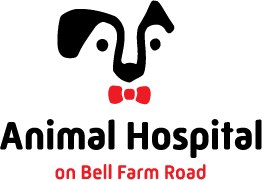Library
-
The clinical signs of congestive heart failure (CHF) are seen in many dogs as they age. The two most common causes of CHF are chronic valvular disease and dilated cardiomyopathy. Hypertension (high blood pressure) may contribute to heart disease and CHF. Secondary medical conditions, such as obesity, low thyroid, or kidney disease may require dietary changes. Key nutritional goals are to maintain a stable body weight, deliver appropriate Calories, and feed a balanced diet that the dog will regularly eat.
-
Diabetes mellitus is a disease in which the body can no longer appropriately manage glucose for its energy requirements. Overweight and obese dogs are at greater risk of developing DM, so obesity prevention should be started early in puppyhood, with portion-controlled meal feeding. Once a dog has been diagnosed with DM, an owner must work closely with their veterinarian to choose insulin therapy and an appropriate diet to achieve stable blood glucose (good glycemic control).
-
Nutritional management can be an effective strategy in the treatment of liver disease when used in combination with appropriate medical therapy. The goals of nutritional management of liver disease focus on controlling the clinical signs as opposed to targeting the underlying cause. Your veterinarian will work with you to help you make the best decisions on behalf of your dog with liver disease.
-
Over 60% of dogs in North America are either overweight or obese, so paying attention to the balance between activity and calorie intake is important. Nutrient formulation and portion control are the two most important aspects of weight control. Once you have chosen a formula and have calculated a reasonable daily portion based on calorie density, the best way to stay on track and prevent unwanted weight gain is to combine portion control with regular, formal weigh-ins.
-
Working and service dogs come in many forms; as such, their nutritional needs vary widely. All diets should be complete, balanced, and life-stage appropriate, with consideration towards energy density and maintenance of ideal body condition. This article reviews these nutritional considerations and provides clinically relevant tools for the dog handler and the veterinary care team.
-
This handout summarizes the strong link between good nutrition and healthy skin and fur. Issues dealing with skin are a very common reason for visits to the vet, and the role of diet and supplementation in treating these conditions are highlighted.
-
This handout discusses the risks and benefits of feeding commercially prepared fresh, whole-food diets, as well as home-prepared recipes for your cat or dog. Topics highlighted include food safety, nutritional imbalances, and the need to ensure that any diet has been well-researched for nutritional safety and completeness.
-
Dogs are omnivores meaning that, under normal circumstances, dogs can meet their nutritional needs by eating a combination of plant and animal foods. Selecting a dog food can be a challenging task. Feeding your dog a proper diet for their life stage is one of the most important aspects to help keep them at optimal health. Your veterinary health care team can help you make good-quality diet choices and determine the correct number of calories your dog needs in a day.
-
The optimal diet varies from species to species, and contains an ideal ratio of the major essential nutrients of proteins, fats and carbohydrates, as well as adequate levels of trace nutrients such as vitamins and minerals. While a recipe for a home-cooked diet may appear to come from a knowledgeable source, ideas about what constitutes the ideal diet for dogs and cats is currently evolving. Your veterinarian can help ensure that your pet's diet is appropriate and healthy.
-
By-products are ingredients commonly found in commercial pet foods and are considered highly desirable by many human cultures. However, there is ambiguity surrounding this term and misperceptions related to overall nutritional value. This article reviews the formal definition of by-products in the pet food industry and highlights the nutritional and environmental benefits they provide.

